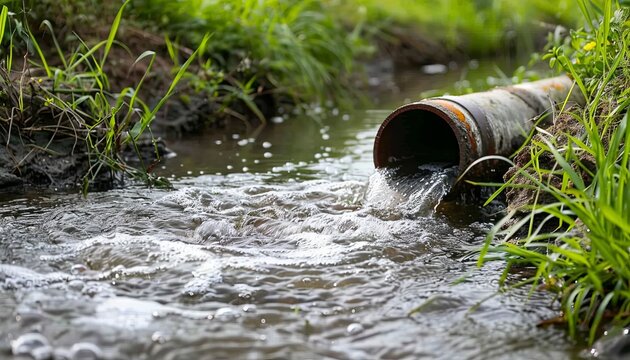What to Do When a Burst Pipe Causes Water Damage in Your Home
What to Do When a Burst Pipe Causes Water Damage in Your Home
Blog Article
Protecting Against Ruptured Piping: Crucial Tips to Protect Your Pipes
Protecting against burst pipelines is a critical concern for homeowners, specifically throughout colder months when the danger of freezing is heightened. Applying critical procedures such as correct insulation, regular assessments, and keeping consistent interior temperatures can significantly lower the probability of pipeline failing.
Understand Pipeline Vulnerabilities
Comprehending pipeline susceptabilities is important for effective plumbing upkeep and avoiding pricey damage. Numerous variables contribute to the vulnerability of pipelines to bursts, consisting of material composition, age, and ecological problems. Older pipelines, particularly those made from galvanized steel or polybutylene, often degrade with time, leading to increased threat of ruptures and leakages.
Temperature level variations can likewise considerably influence pipe integrity. In chillier environments, water trapped in pipes can ice up, putting in and broadening pressure on the pipeline walls, which may eventually cause a burst. High water pressure can stress pipes, especially at joints and bends, heightening the probability of failing.

Insulate Pipeline Appropriately
Correct insulation of pipelines is critical for avoiding cold and subsequent bursts during chilly climate (burst pipe). Insulating your plumbing system properly safeguards versus temperature drops that can bring about pricey damage. Begin by recognizing vulnerable areas where pipelines are exposed to exterior temperatures, such as cellars, attics, and outside wall surfaces
Use foam pipe insulation sleeves or cover insulation tape around these locations to provide a safety barrier. Make sure that all areas of the pipelines, especially those with minimal warm direct exposure, obtain sufficient insulation. Pay unique attention to joints and installations, as these are much more susceptible to freezing.
When protecting, it's important to choose products that fulfill regional structure codes and are suitable for the details environment. Fiberglass insulation is frequently recommended for its thermal resistance residential or commercial properties. Furthermore, take into consideration making use of warmth cords or tape in extreme problems, which can be connected in to offer additional heat
Frequently inspect shielded pipelines for any type of indications of wear or damage, as jeopardized insulation can diminish its efficiency. By taking these aggressive actions, you dramatically decrease the danger of pipe ruptureds, ensuring a trustworthy plumbing system throughout the cold weather.
Maintain Regular Temperature
A stable indoor temperature is essential for avoiding burst pipes throughout the cold months. When temperature levels drop, water within pipes can freeze, broadening and developing pressure that may eventually create the pipes to burst.Utilizing a programmable thermostat can help handle interior temperatures properly, guaranteeing that spaces with pipes stay cozy also when the residence is empty.
Additionally, it is sensible to allow taps to leak slightly throughout severe cold spells. This small circulation of water can avoid cold by reducing stress within the pipes. During especially serious climate occasions, think about briefly putting on hold any kind of nighttime obstacles on your thermostat to keep a stable warm setting. By implementing these methods, house owners can dramatically decrease the threat of pipe ruptureds and protect their pipes systems versus the rough winter season components.
On A Regular Basis Examine Plumbing
Routine evaluations of plumbing systems are important for preventing ruptured pipes and maintaining total home honesty. Throughout these evaluations, it is necessary to examine visible pipes for indicators of deterioration, leakages, or wear.
In addition, evaluating joints and links is important, as these factors are typically vulnerable to leaks. Homeowners need to also analyze water stress degrees, as excessive pressure can stress the pipes system and increase the threat of pipeline ruptureds.
Think about scheduling specialist plumbing inspections at least when a year, especially before winter, to guarantee your system is prepared for chillier temperatures. By being aggressive in your strategy, you can safeguard your home versus the disruptive and costly repercussions of ruptured pipelines.
Know Emergency Situation Procedures
Comprehending emergency treatments is vital for each homeowner, specifically after performing regular pipes examinations. Being prepared for a pipes emergency situation can significantly alleviate damages and this post save costs. First, locate your primary water shut-off valve; it is usually found near the water meter or where the main line enters your home. Acquaint on your own with its procedure, as shutting down the water supply promptly can prevent substantial flooding.
Next, keep vital devices handy. A plumbing emergency kit need to consist of a wrench, plunger, check my reference and towels, in addition to a flashlight and a pail for small leaks. In addition, think about having the get in touch with info for a relied on plumber easily offered, must the situation intensify beyond your control.
If you find a leakage or ruptured pipeline, quickly turn off the water and alert your plumber. Document the damage with photos for insurance coverage functions. Know the indicators of potential plumbing problems, such as uncommon water pressure fluctuations or damp places on wall surfaces
Ultimately, aggressive expertise and speedy action are crucial in managing plumbing emergency situations, ensuring your home remains secured and minimizing potential damage.

Final Thought
In final thought, stopping burst pipelines requires a complex method that includes understanding pipeline vulnerabilities, proper insulation, maintaining consistent interior temperatures, routine evaluations, and understanding of emergency situation procedures. By executing these vital methods, the threat of pipes failings can be significantly decreased, thereby guaranteeing the durability and effectiveness of the plumbing system. Positive measures not just protect against possible damages but also contribute to general water conservation and the defense of building.
In cooler climates, water entraped in pipelines can freeze, exerting and increasing stress on the pipeline walls, which might eventually lead to a ruptured. When temperatures drop, water within pipelines can ice up, increasing and creating stress that may inevitably cause the pipelines to burst. By applying these methods, house owners can considerably lower the risk of pipe bursts and secure their plumbing systems versus the extreme winter season elements.

Report this page